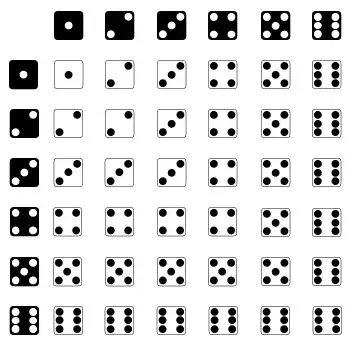This is very much delayed, but consider the case with an $n$-sided die. As has already been observed, the expected value of the maximum of two $n$-sided die is
$${1 \over n^2} \sum_{k=1}^n (2k^2-k)$$
and we can write out this sum explicitly. In particular, we can expand to get
$${1 \over n^2} \left( \left( 2 \sum_{k=1}^n k^2 \right) - \sum_{k=1}^n k \right)$$
and recalling the formulas for those sums, this is
$$ {1 \over n^2} \left( {2n(n+1)(2n+1) \over 6} - {n(n+1) \over 2} \right) $$
or after some rearrangement
$$ {(n+1)(4n-1) \over 6n}. $$
In particular this is approximately $2n/3$. This could have been guessed if you know that the expectation of the maximum of two uniform random variables on $[0, 1]$ has the beta distribution $B(2,1)$, which has mean $2/3$.
